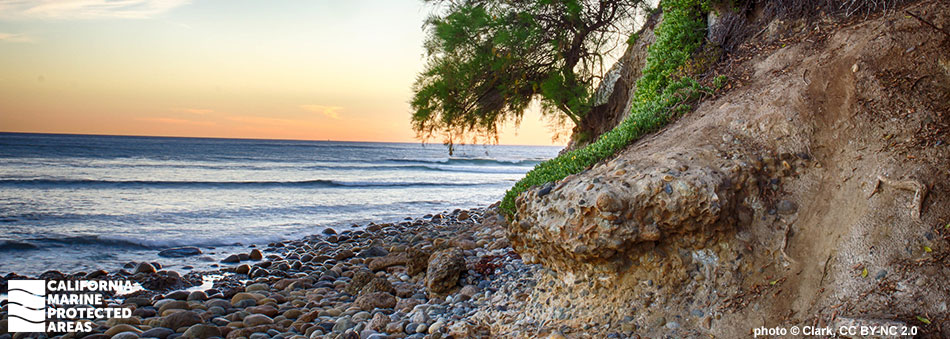
Overview
Located approximately 10 miles north of the City of San Diego, South La Jolla State Marine Reserve (SMR) and South La Jolla State Marine Conservation Area (SMCA) are adjoining marine protected areas (MPAs) that protect an array of habitats.
South La Jolla SMR provides protection for more than five square miles of dense kelp forest, rocky and sandy intertidal areas, and rocky reefs. This MPA’s diverse habitats are home to spawning grunion, garibaldi, giant sea bass, and leopard sharks.
South La Jolla SMCA provides protection for nearly two and a half square miles of sandy seafloor, dense kelp forests, and rocky reefs. These habitats are home to an array of creatures including abalone, yellowtail, brown pelicans, and California sea lions.
With an onshore-offshore orientation, the larger SMR stretches from shore to a depth of 180 feet where it meets the adjacent SMCA. The SMCA extends to the three-nautical-mile state water limit, reaching depths greater than 270 feet. Encompassing a variety of habitats and depths, there are many ways to enjoy the South La Jolla MPAs, including surfing, birdwatching, tidepooling, kayaking, snorkeling, and scuba diving.
Regulations
South La Jolla SMR
It is unlawful to injure, damage, take, or possess any living, geological, or cultural marine resource.
California Code of Regulations Title 14, Section 632(b)(143)(opens in new tab)
South La Jolla SMCA
It is unlawful to injure, damage, take, or possess any living, geological, or cultural marine resource, EXCEPT:
Recreational take of pelagic finfish (northern anchovy, barracudas, billfishes, dorado (dolphinfish), Pacific herring, jack mackerel, Pacific mackerel, salmon, Pacific sardine, blue shark, salmon shark, shortfin mako shark, thresher shark, swordfish, tunas, Pacific bonito, and yellowtail) by hook-and-line only is allowed.
California Code of Regulations Title 14, Section 632(b)(144)(opens in new tab)
Quick Facts
South La Jolla SMR
MPA size: 5.04 square miles
Shoreline span: 2.3 miles
Depth range: 0 to 180 feet
Habitat composition*:
- Rock: 5.55 square miles
- Sand/mud: 2.67 square miles
South La Jolla SMCA
MPA size: 2.46 square miles
Depth range: 147 to 275 feet
Habitat composition*:
- Rock: 0.60 square miles
- Sand: 1.85 square miles
*Habitat calculations are based on three-dimensional area and may exceed the total MPA area listed above.